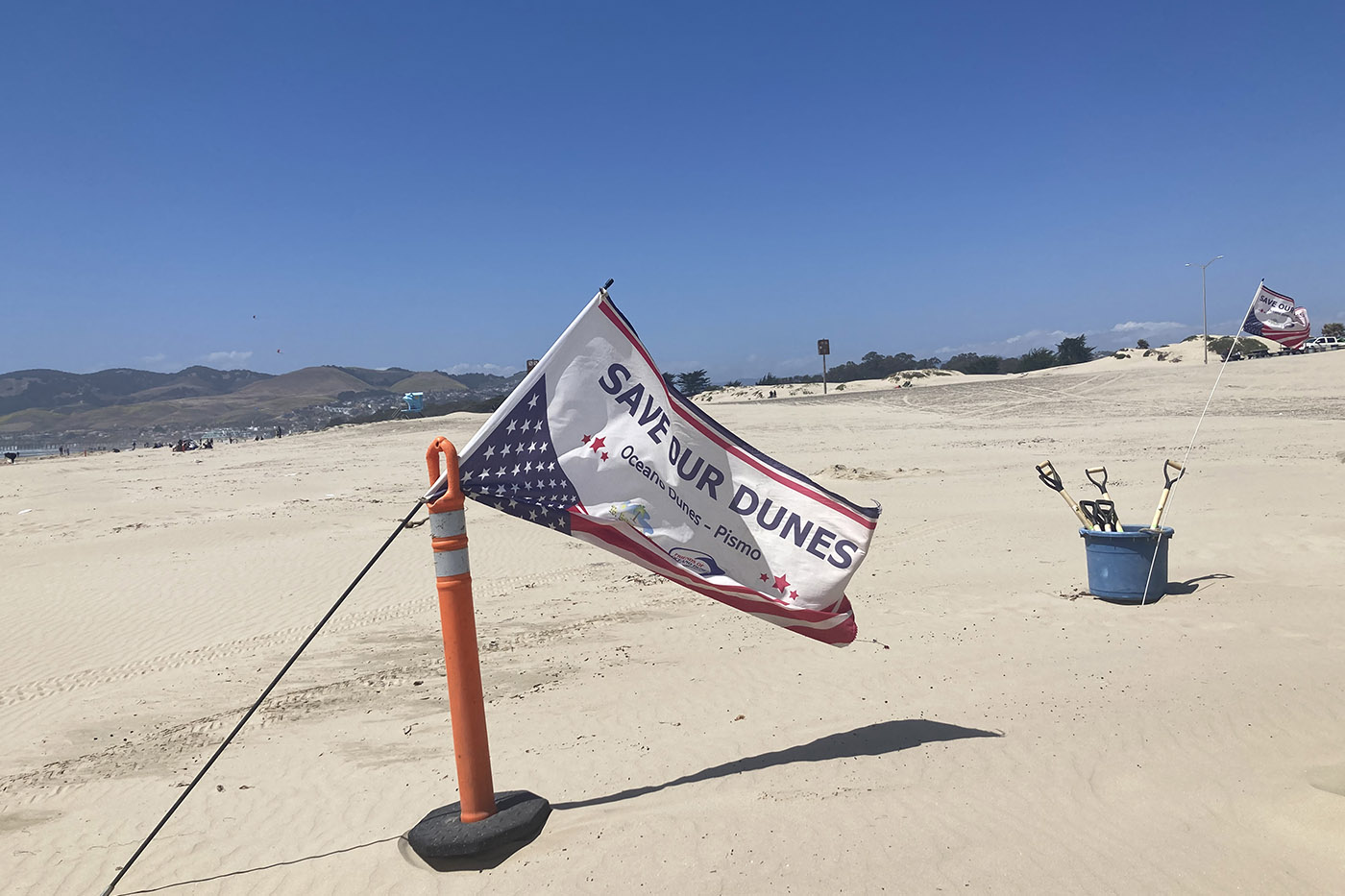Locals react to Coastal Commission phasing out OHV access at Oceano Dunes

Since deciding to ban off-highway vehicles (OHVs) at Oceano Dunes State Vehicular Recreation Area (SVRA) in March, the California Coastal Commission is facing multiple lawsuits from nonprofit Friends of Oceano Dunes.
The commission is also facing backlash from those who want OHV access to continue.
Reporter Sophie Lincoln spoke with some Oceano locals about what the decision means for them.
Oceano resident and co-coordinator for non-profit organization Dunes Alliance Cynthis Replogle said she is opposed to vehicular access on the dunes because of the harm caused to shorebirds and other species on the beach, as well as environmental justice issues.
Oceano Dunes is home to the federally threatened snowy plover that nests on the shore of the beach.
According to the Center for Biological Diversity, vehicular access at Oceano Dunes is a threat to the plovers’ recovery as the vehicles disrupt their habitat and sometimes run them over.
In terms of environmental justice, Replogle said that vehicular activity at the beach puts an undue burden on the nearby neighborhoods, where some marginalized communities live.
Replogle said unhealthy air quality is among the stresses faced by local residents.
According to the San Luis Obispo County Air Pollution Control District’s South Community Monitoring Project report, studies performed by the district “have shown the source of elevated particulate matter pollution on the Nipomo Mesa to be windblown dust from the open sand areas of the Oceano Dunes State Vehicular Recreation Area, and that emissions are increased by off-road activity.”
“I know people who live up there,” Replogle said. “They have to monitor the air quality and not go outside on certain days because of all the air pollution due to the vehicular use.”
In 2017, the Coastal Commission unanimously approved a Coastal Development Permit consisting of measures California State Parks would take to reduce dust emissions emanating from Oceano Dunes, including restricting certain vehicular activities.
However, the approval was remanded after lawsuits were filed by OHV advocates.
Replogle also said that the vehicles are hazardous to pedestrians trying to utilize the beach.
“As a jogger, I’ve had vehicles drive very close by me, because I think there are some people in vehicles in the off-roading community who think you shouldn’t be on the beach unless you’re in a vehicle,” Replogle said.
While OHV enthusiasts make up the main group favoring vehicular access, another community who has spoken out against the commission’s decision is the Central Coast chapter of the United Spinal Association.
President of the local chapter of the association Keith Smith said vehicular access on the dunes allows people with disabilities to enjoy the beach.
“You can’t drive a wheelchair out on the beach and access the water, the dunes and all that,” Smith said. “But, you know, if you have an accessible vehicle, we can easily go out on the dunes and the beach and enjoy it for what it is just like everybody else would.”
The March decision to phase out vehicular access also allows for roughly a mile-and-a-half stretch of beach to remain open to vehicular access.
But Smith said this is not enough for the paralysis community.
“It’s a very unfair thing for them to even propose because it cuts out the dunes,” Smith said. “Where else can people go out and enjoy the dunes?”
Smith also said that the decision could have negative effects on the economy, as businesses catering to off-highway vehicles will likely have to close.
However, Oceano resident and Dunes Alliance member Bonnie Ernst said the decision could be beneficial for the economy.
Ernst also said that the various issues that arise with vehicular access outweighs concerns for phasing it out.
“It’s not sustainable for so many different reasons. It’s not just the air. It’s not just the plovers,” Ernst said. “There’s so many different issues.”

